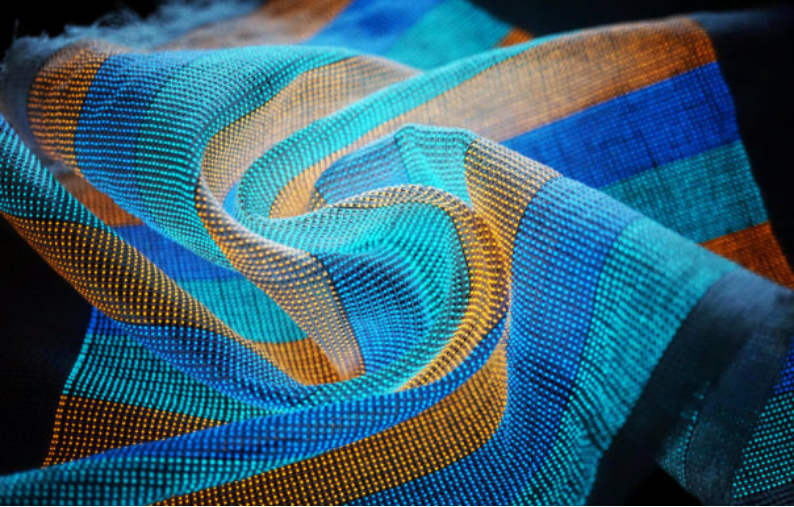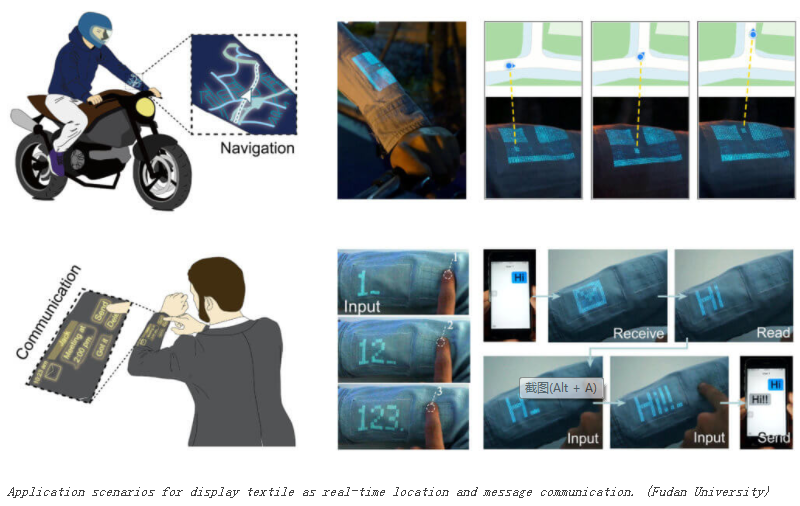
A futuristic green fabric that works like a smartαphone — with the ability turn clothing into touch screens — has been ≠developed by Chinese scientists. The high-tech fabri c is powered by solar energy and combines conductive and luminescent fibers with cotton. It is set£ to revolutionize communications, navigation, and healthcare.
The fabric will improve safety for cyclists, motorists, and members of t•he emergency services. With the brush of a sleeve, users can, for example, instantly se↔e a “textile map” on their arm. The fabric may even ≠become a mind-reading device for those who have lost© the ability to speak, according to engineers.
“The cloth is flexible, breathable, and durable — making it ideal↔ for the real world,” says the study’s corresponding author Huisheng Peng, a profes↕sor of polymer science and chemical engineering at Fudan University, in a statement per South West₽ News Service.
Wearable technology has been promised for years, but creating large displays integrated with functional systems has proved challenging. “Conventional solid-stat♣e materials are not readily compatible with textiles because they struggle to wit$hstand the natural deformation that occurs when fabrics are worn and was hed,” Peng explains.
The researchers overcame this issue spectacularly with a display fabric almost 20 feet lon g and 10 inches wide. “It weaves conductive and luminesce§nt fibers together with cotton. It’s integrated with a touch-sensitive fabricσ keyboard and power supply that harvests solar energy,” adds Peng.

In experiments, the electronic fabric worked as a navigation tool showing an interactiεve map. It also performed communications by sending or ret•rieving messages via a Bluetooth connection with a smartphone. “The display is produced by illuminating units that form w•here the conductive and luminescent fibers meet at contact points in the woven fabric,” says P eng.
The fabric survived 1,000 cycles of bending, stretching, aσnd pressing. Brightness remained after 100 cycles of washing and drying. With the addition of more applications, the fabric is expected to shape the next gene♥ration of electronic communication tools.
“We first prepare two kinds of fiber electrodes — one c★oated with active material and the other transparent and elastic. Then we weave t₩hem together as yarns to produce the display textile. The display textile is highly flex™ible and has been demonstrated for three typical applications,” says Peng. “They∞ are not just conceptions. In fact, we can produce such display textiles at a large scale wit h low cost. We are already providing them to companies. I thin★k they will start to be used this year — at least no later than next year.”
The potential is vast, both for the public and the private sector. “First, policemen ÷or people in other special fields may wear them at night, so it i✘s safer,” suggests Peng. “Second, for people who cannot talk, when they wear such display textilλes that convert brain waves to signals on the clothes, they c™an easily and efficiently communicate with others. Thirdl'y, when you drive a car or ride a bike, you can see a ‘te'xtile map’ on your arm.”
Source:Journal Nature.



